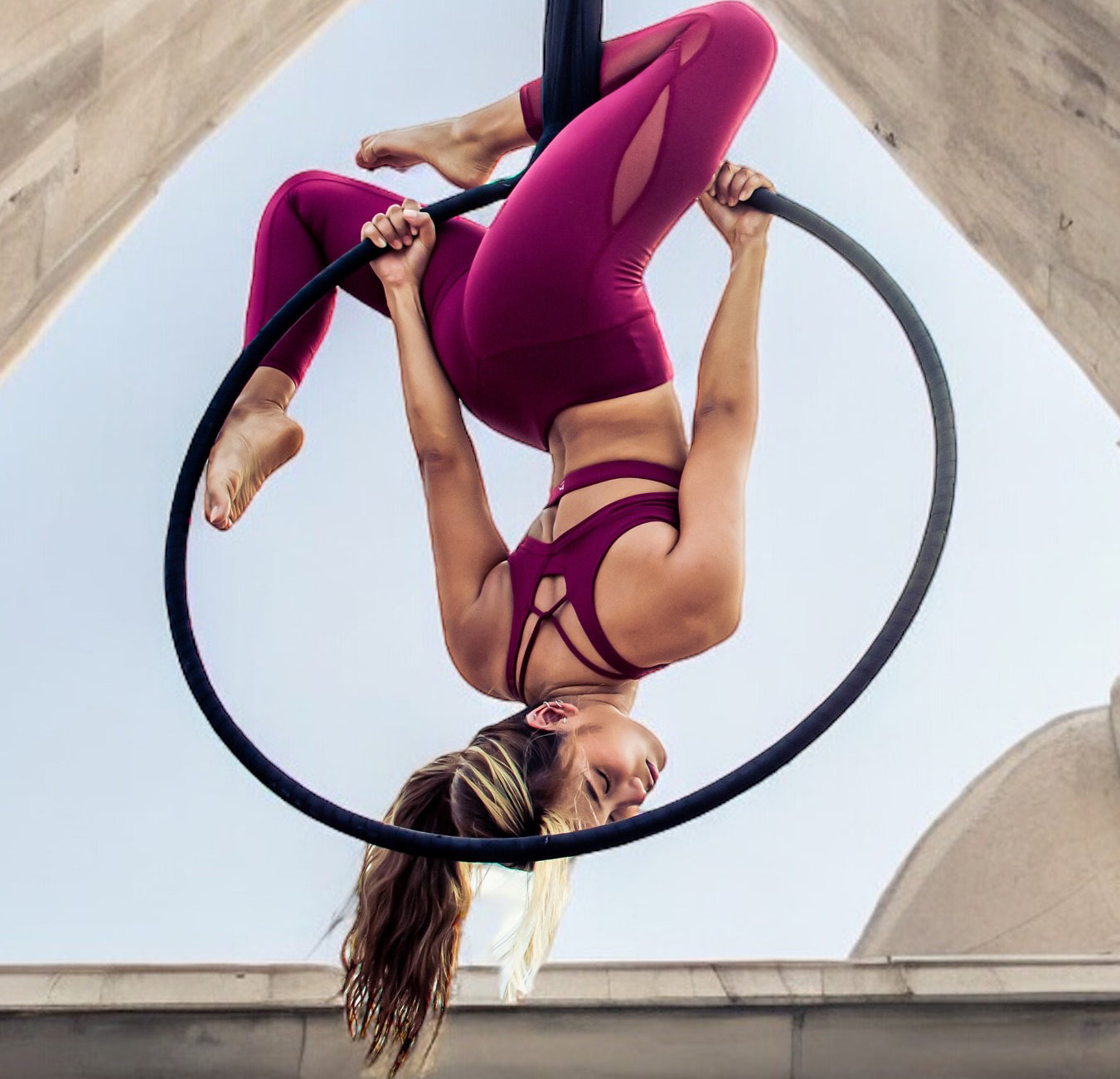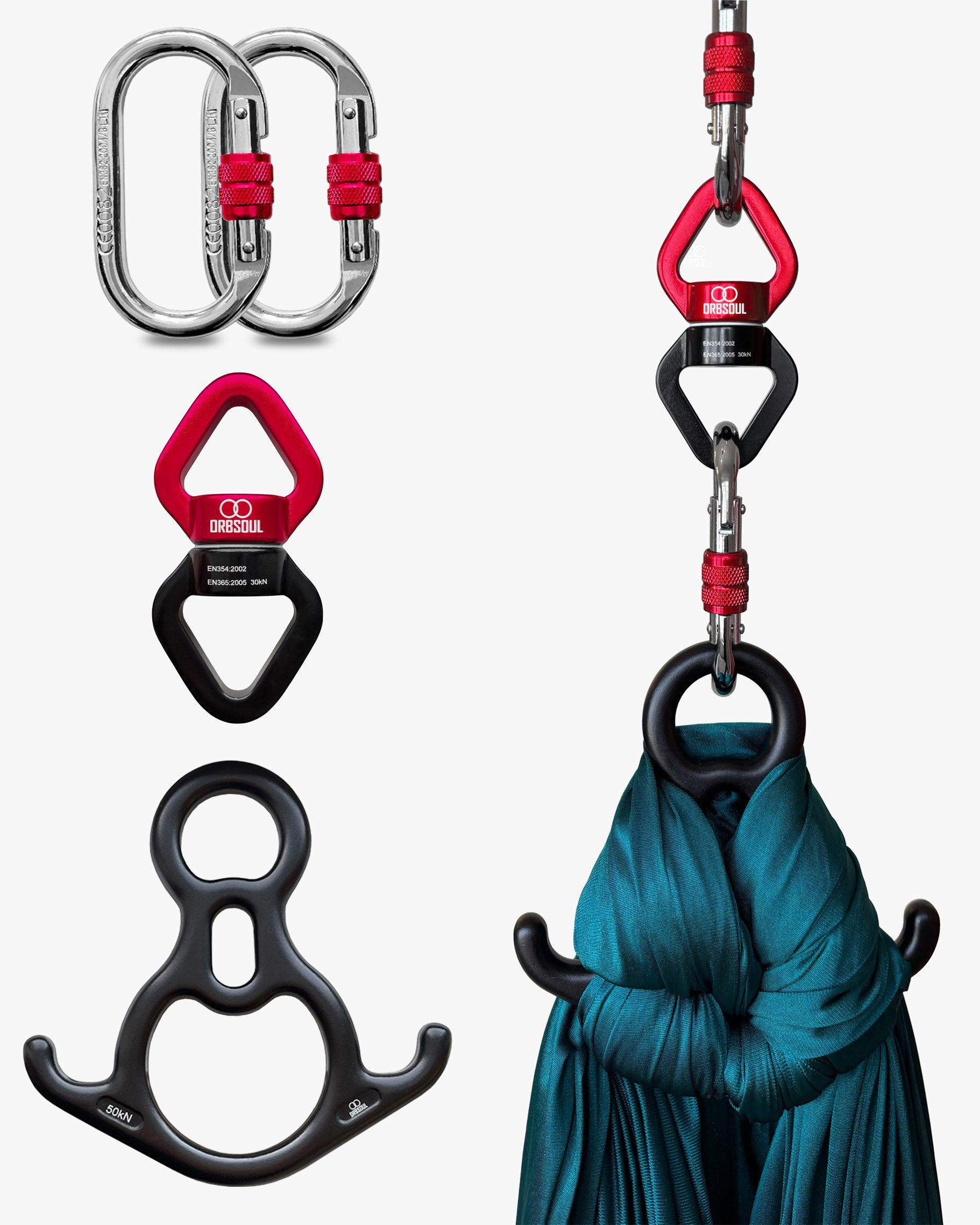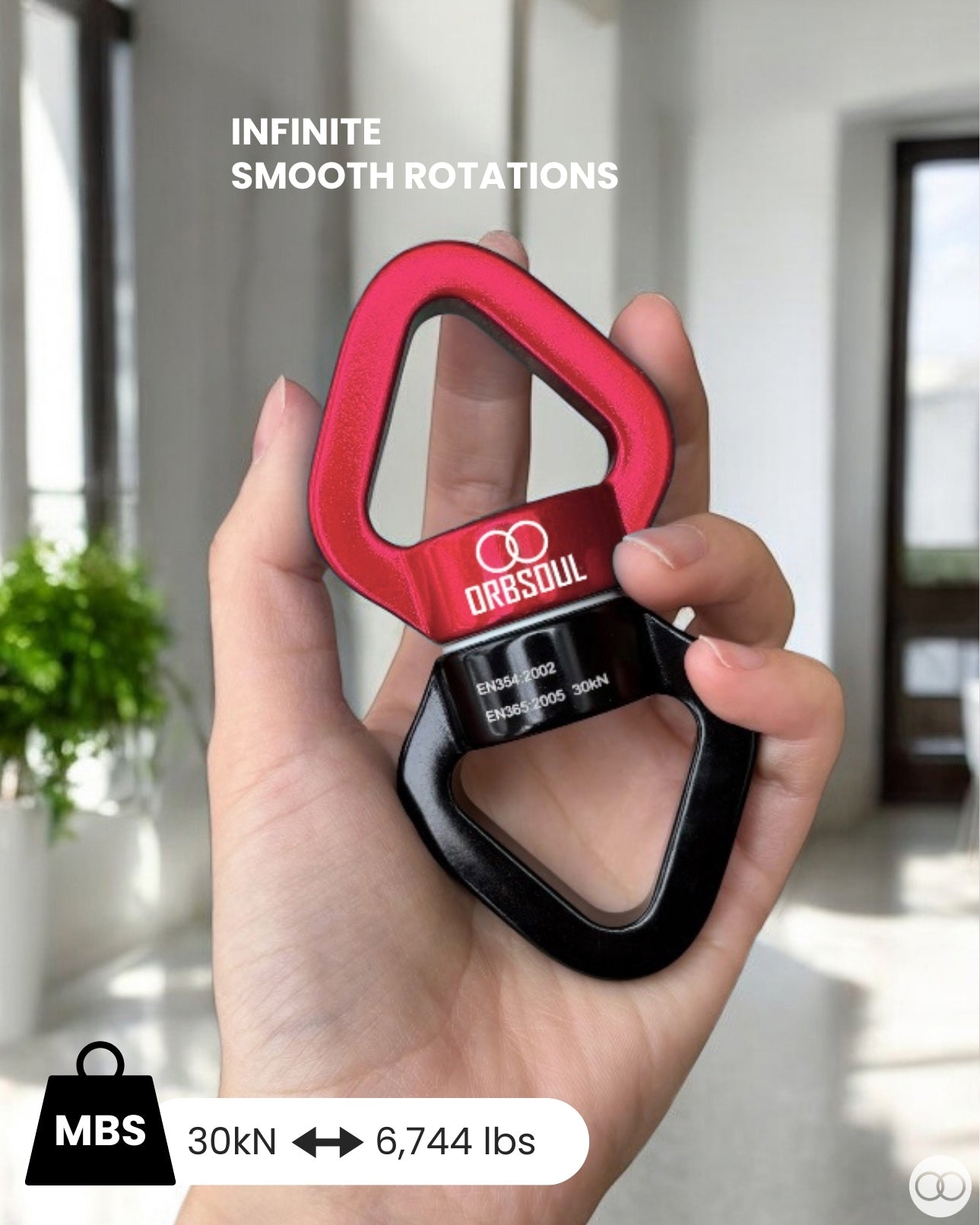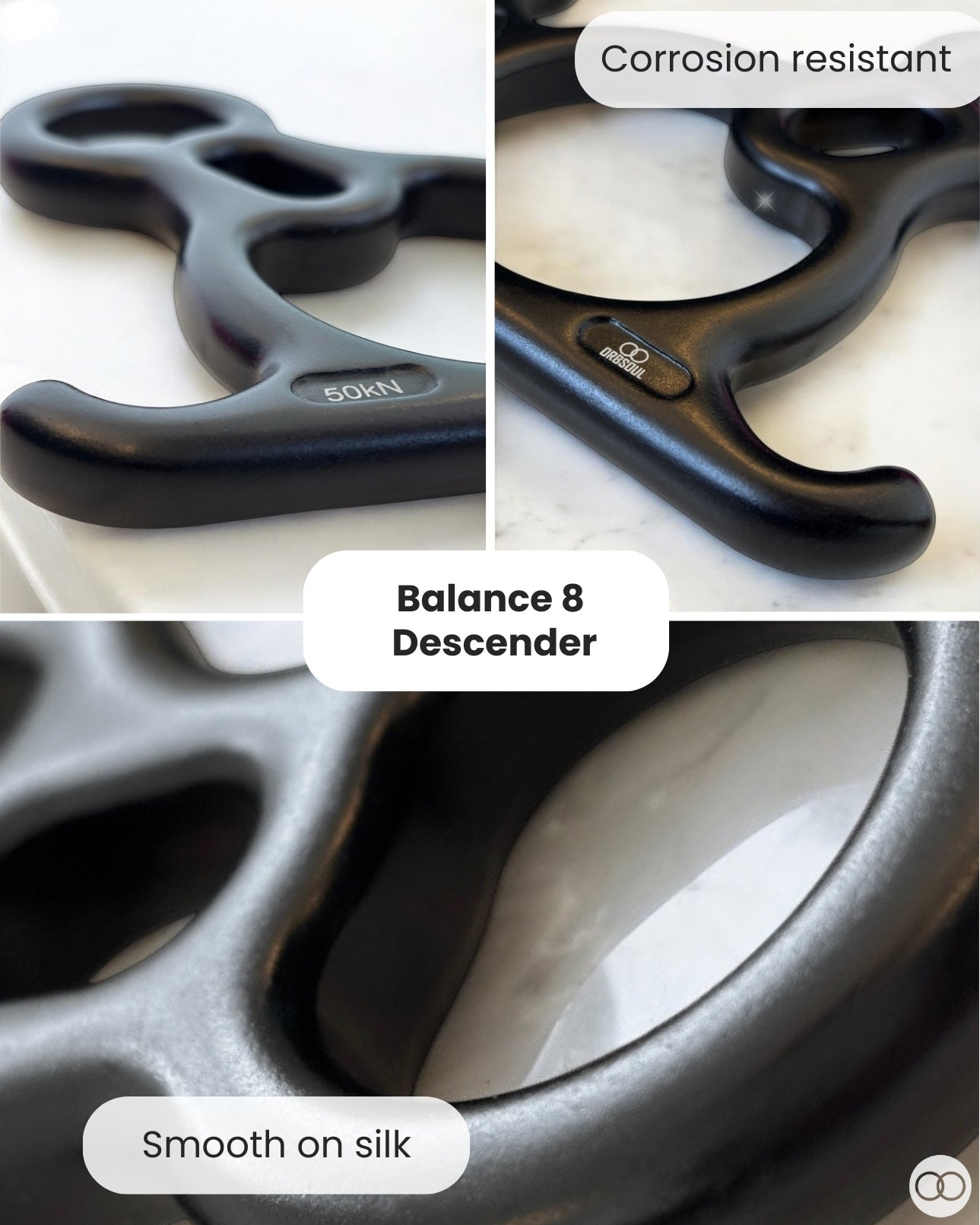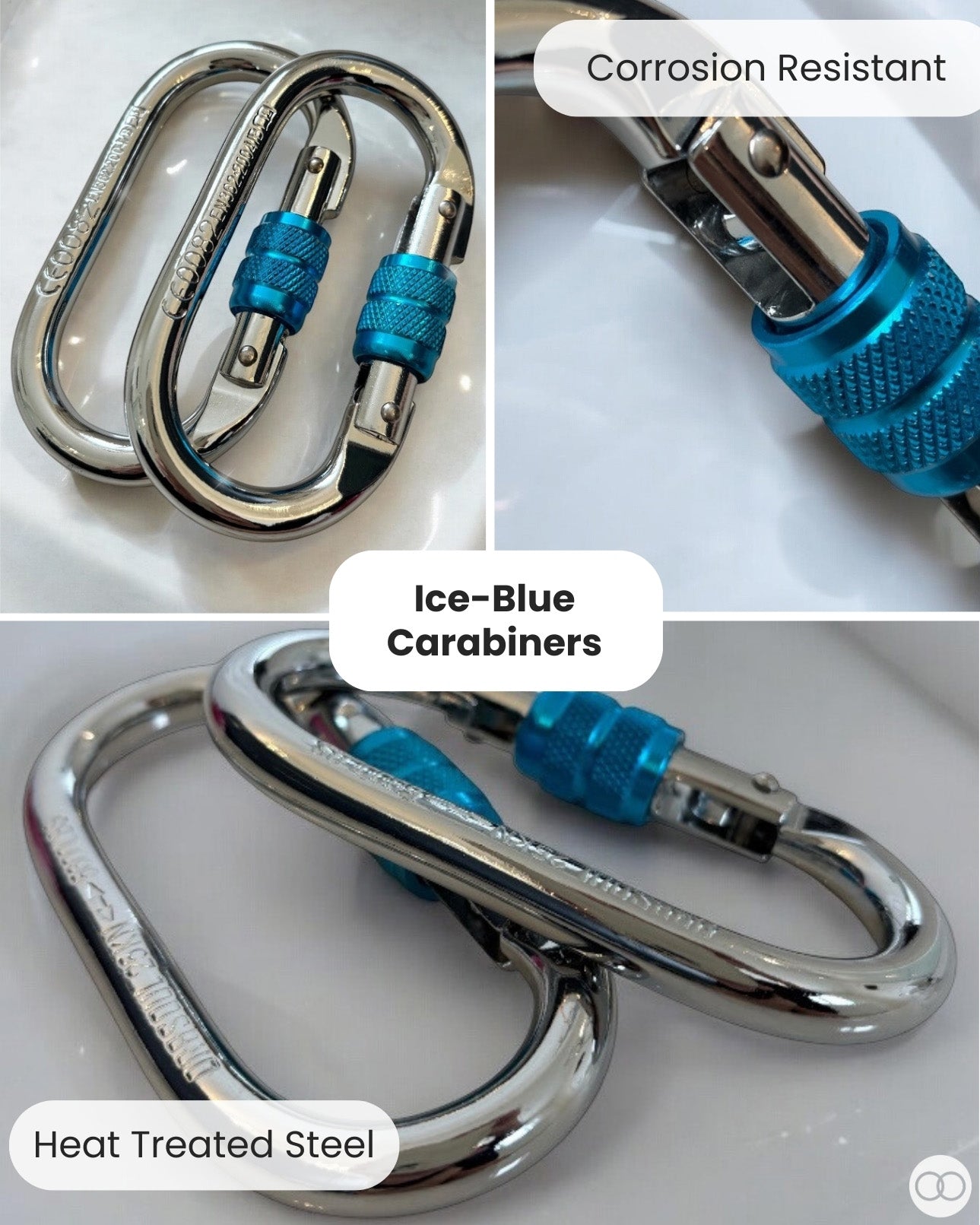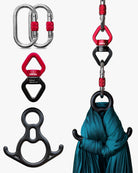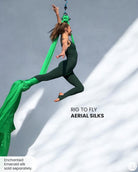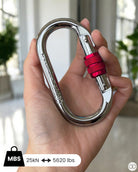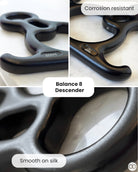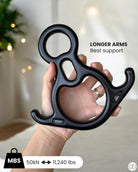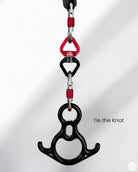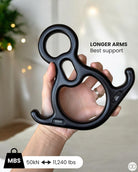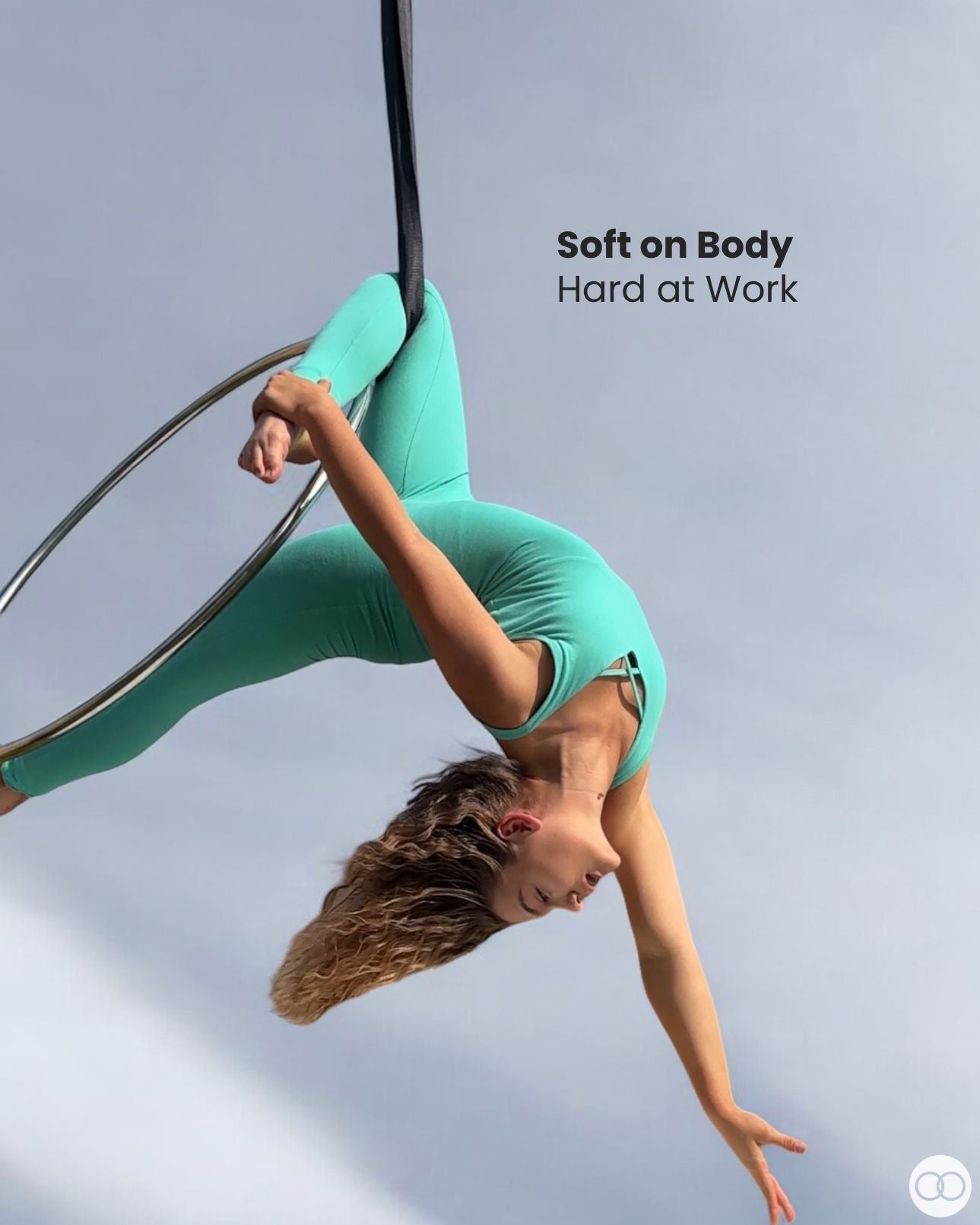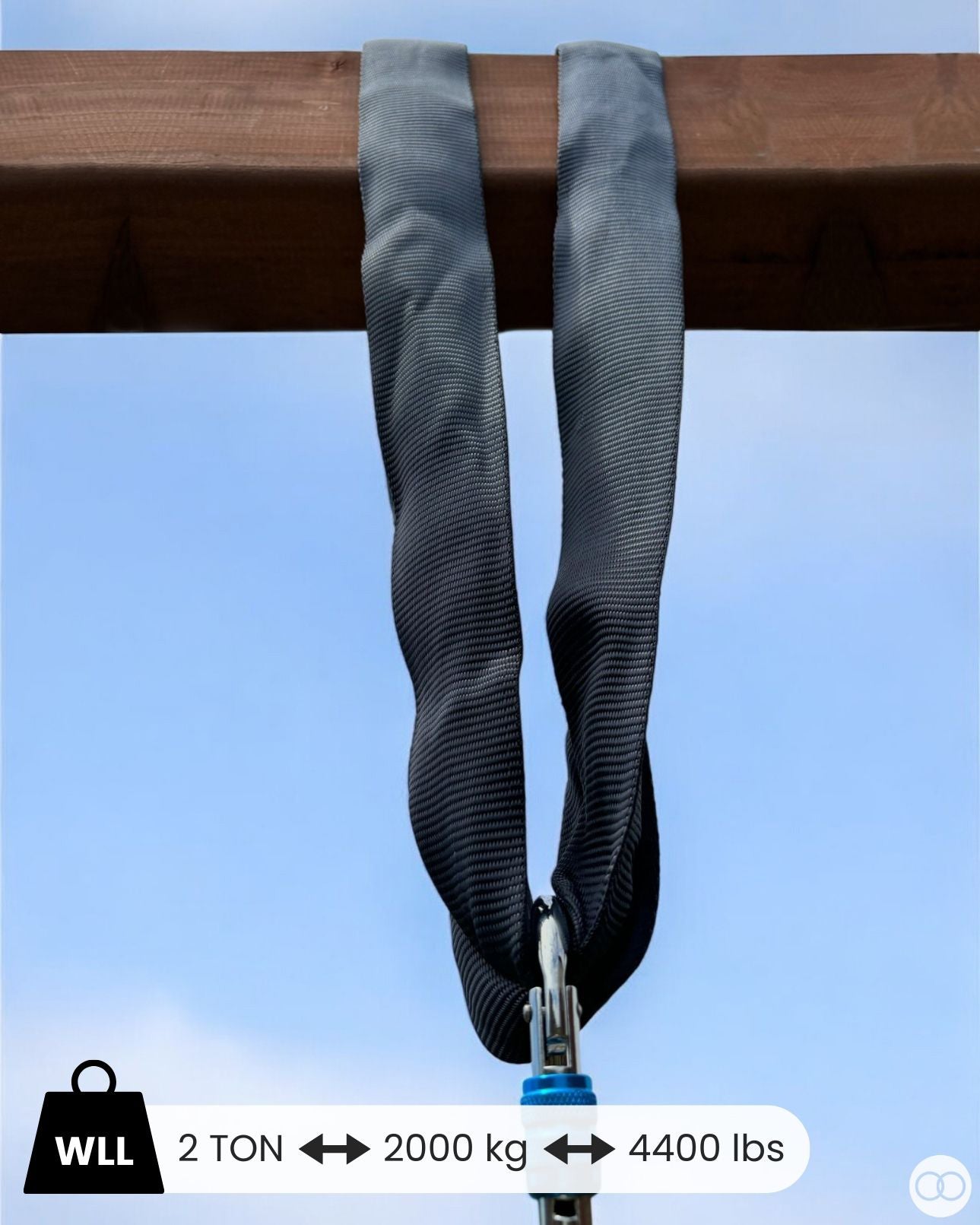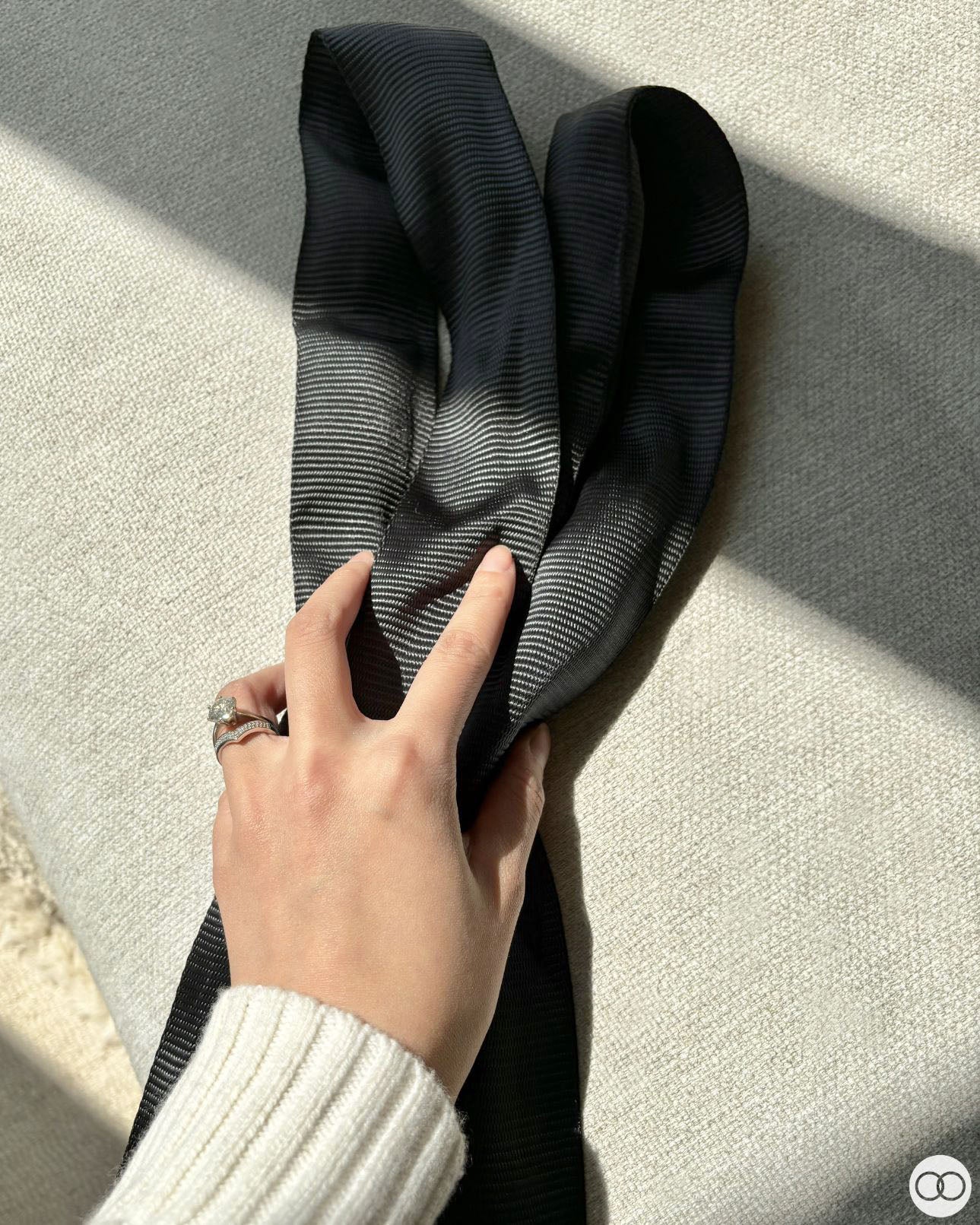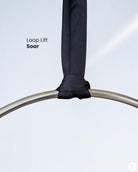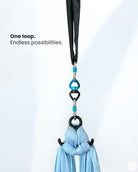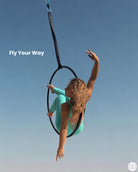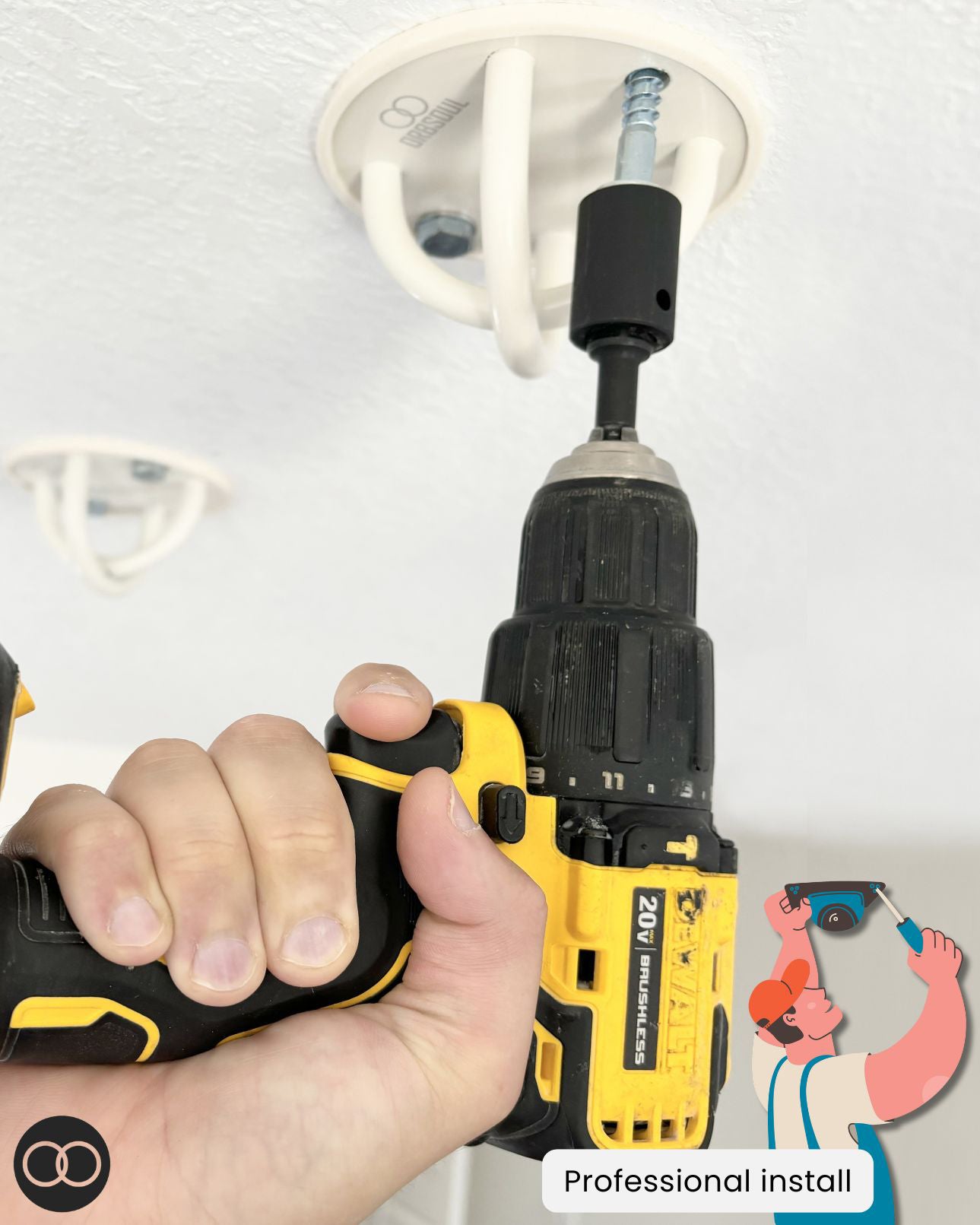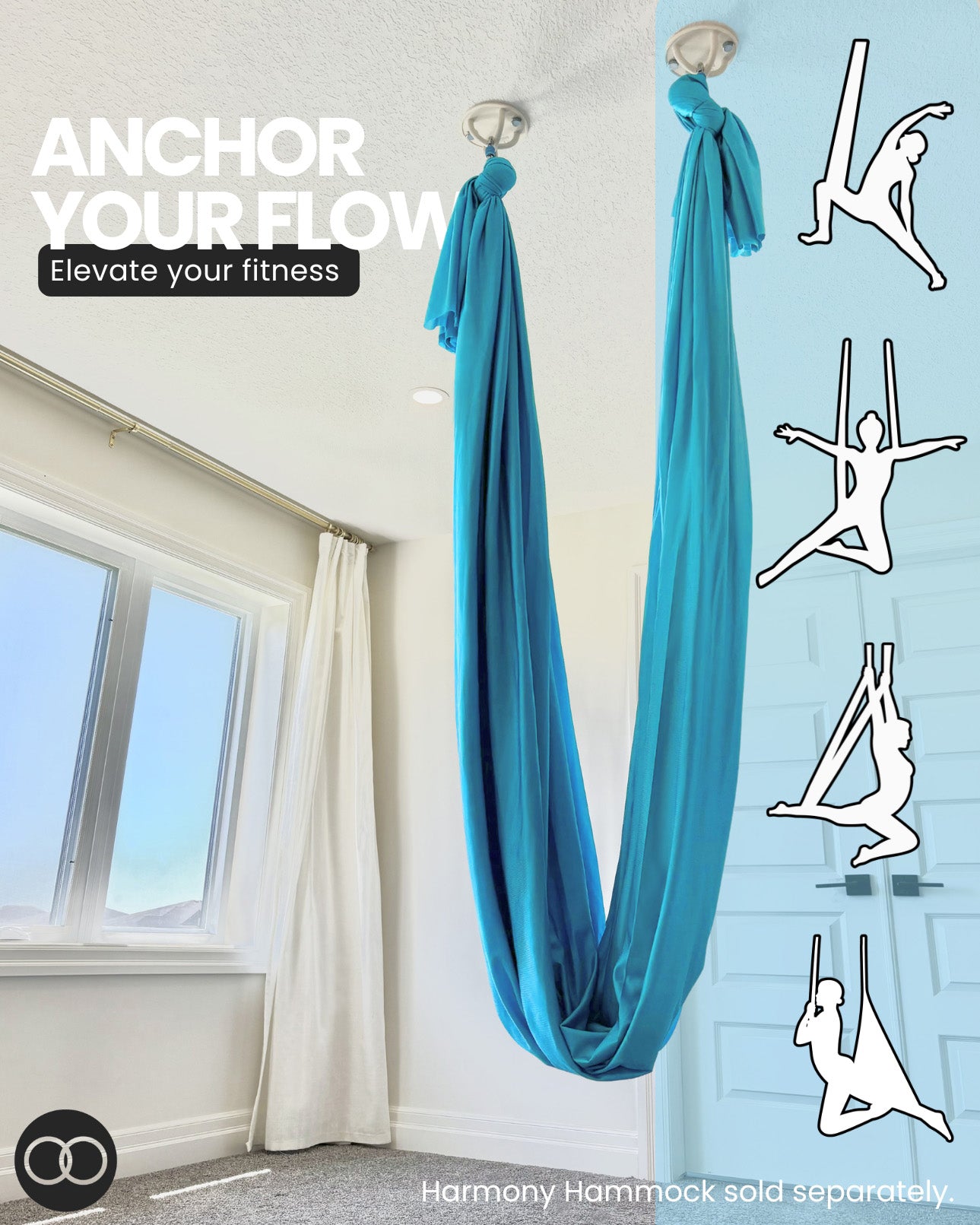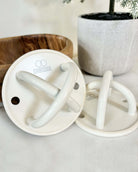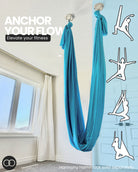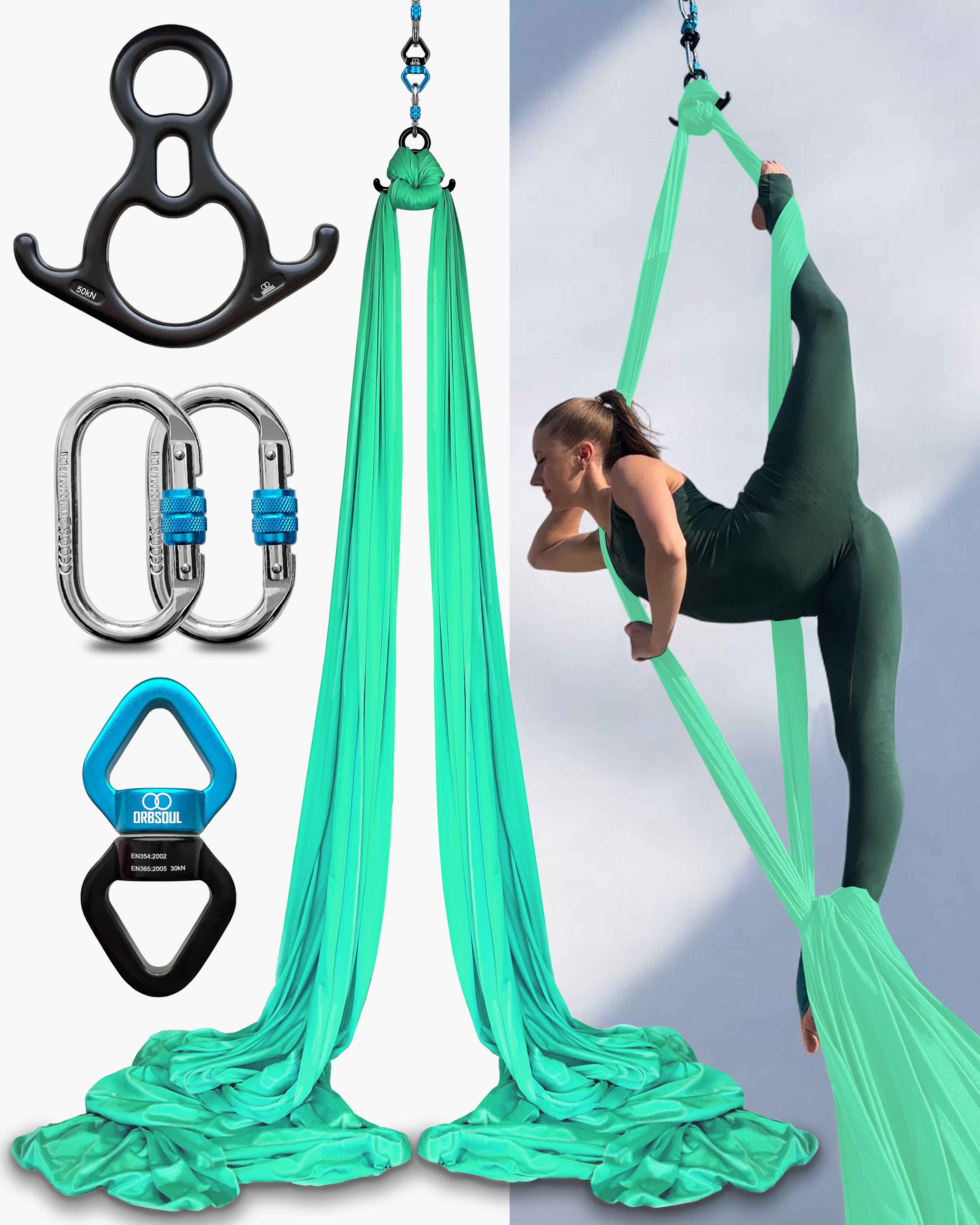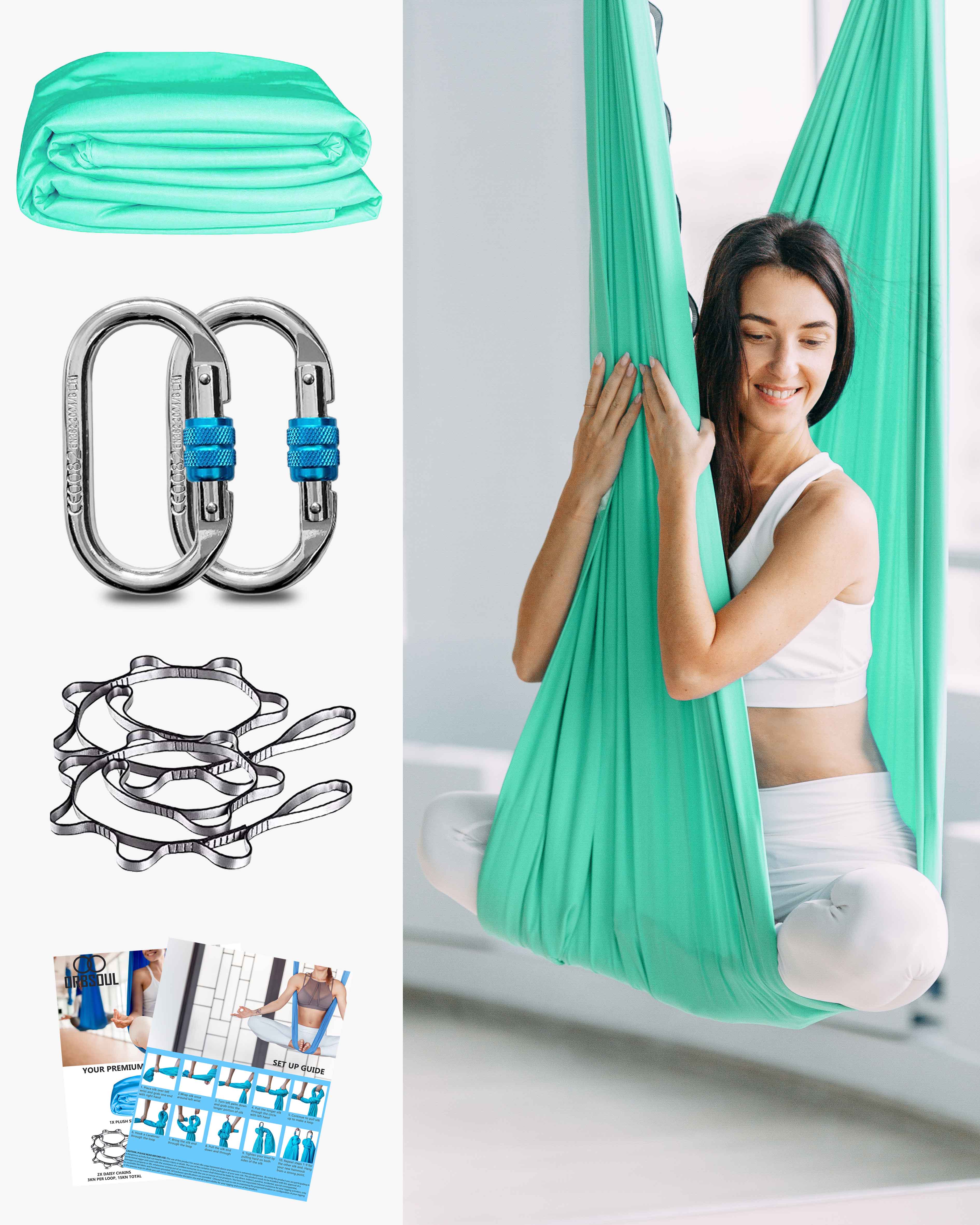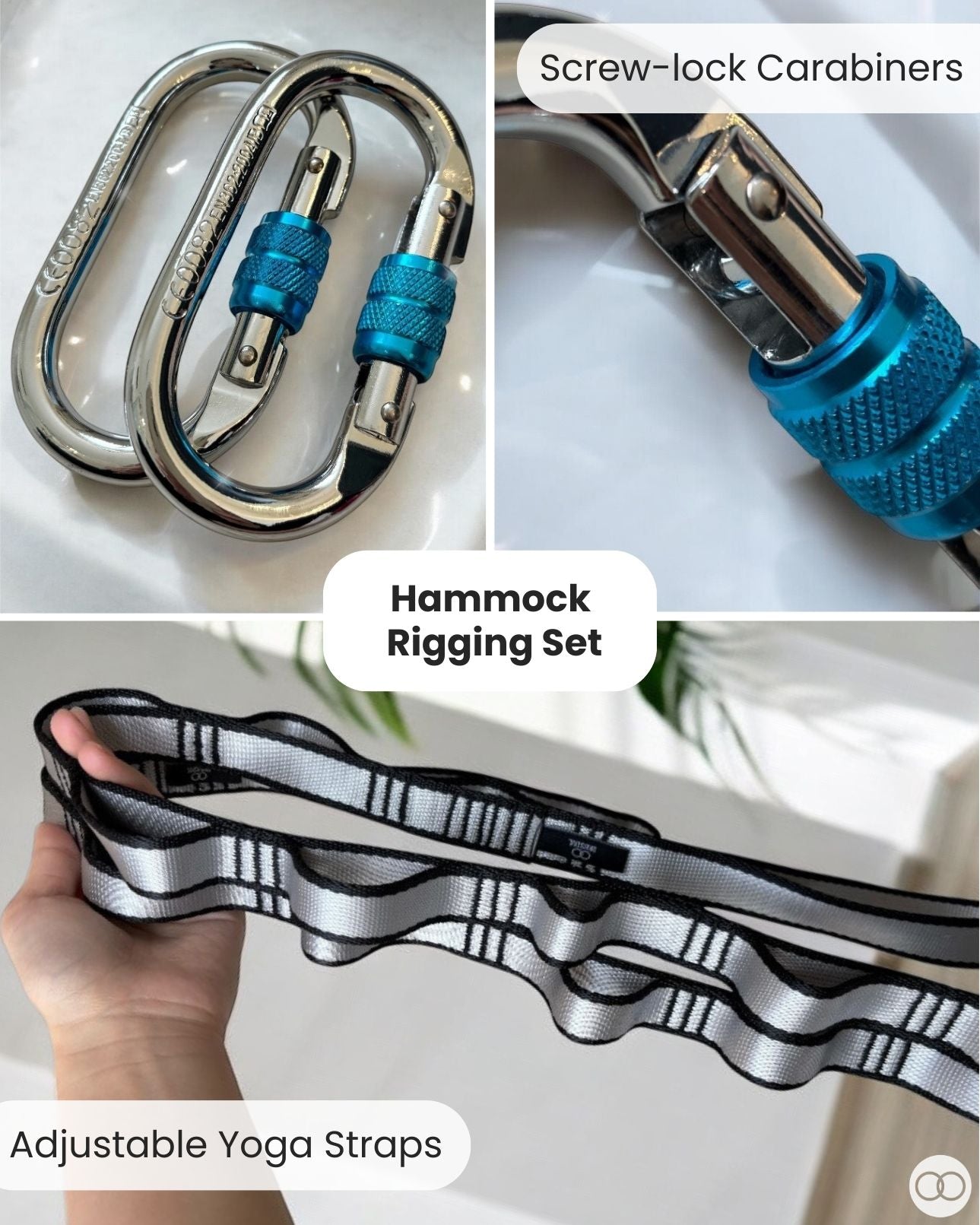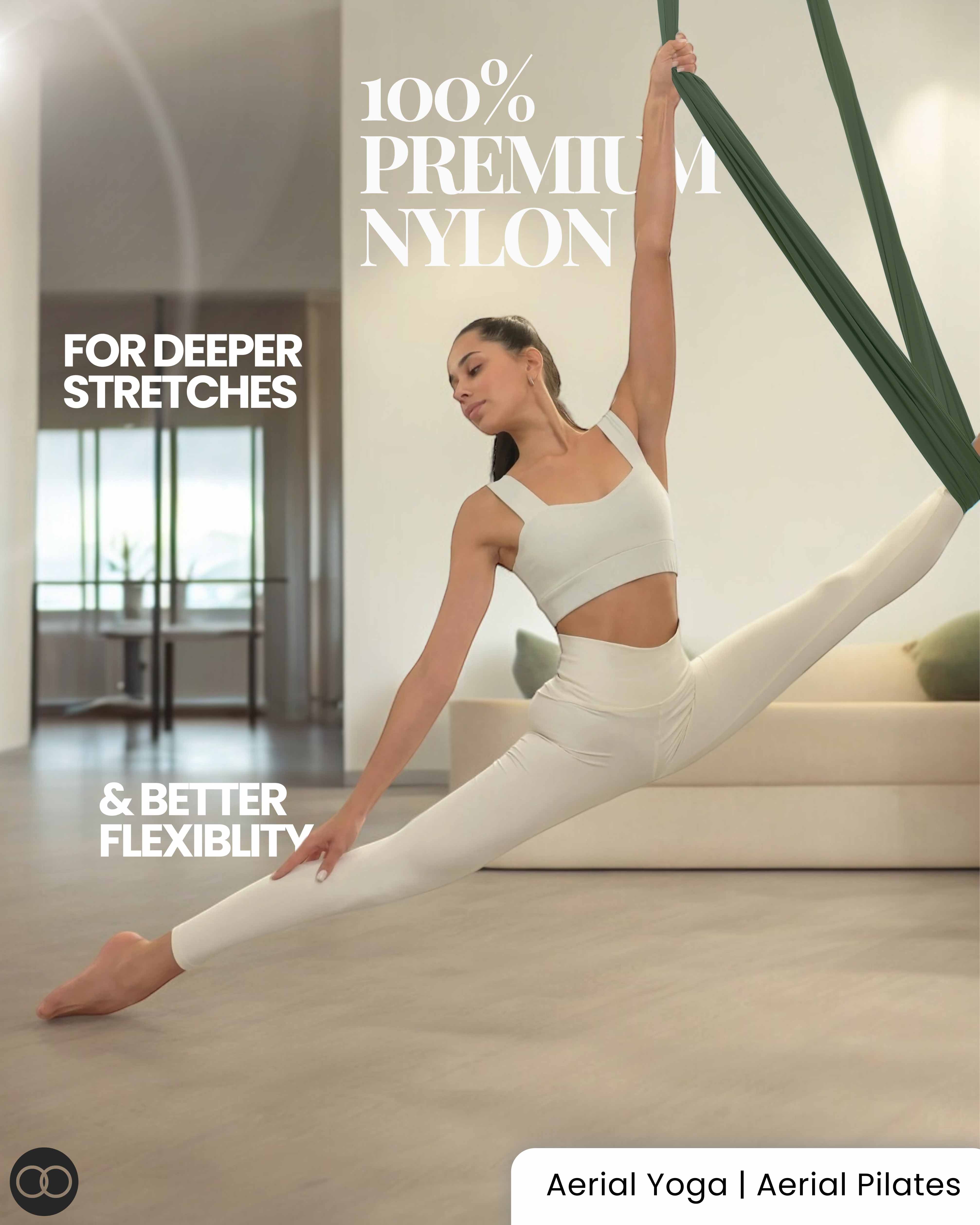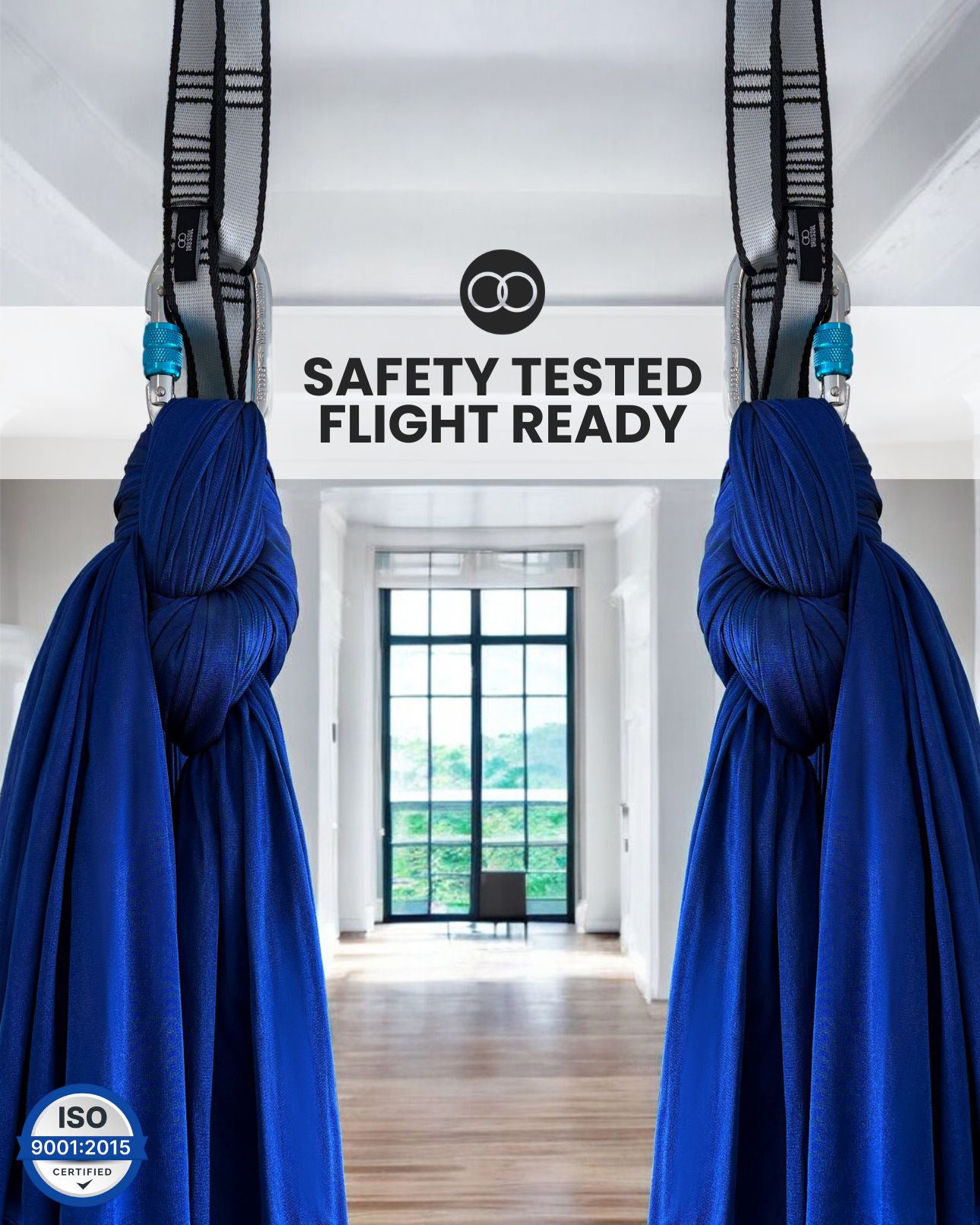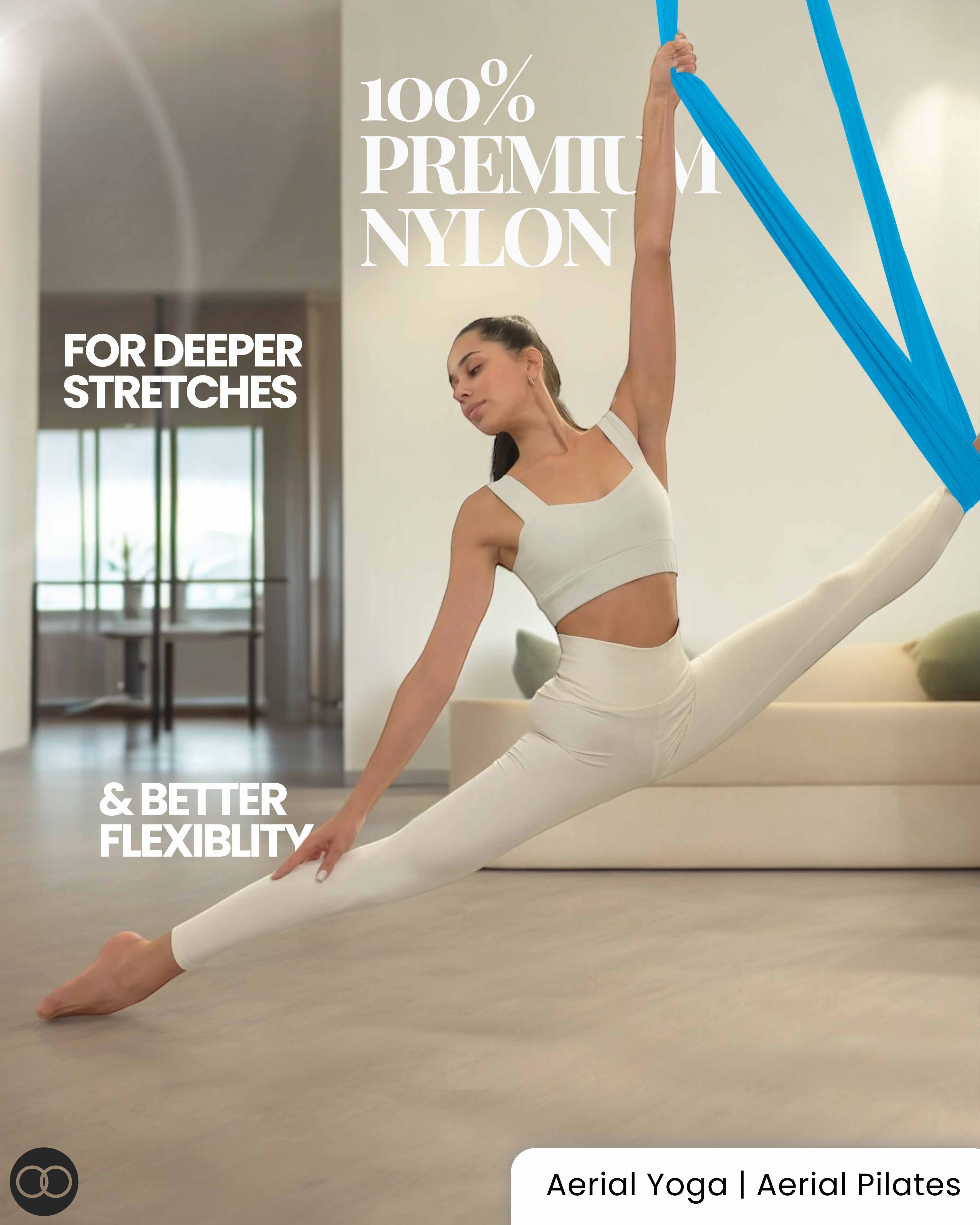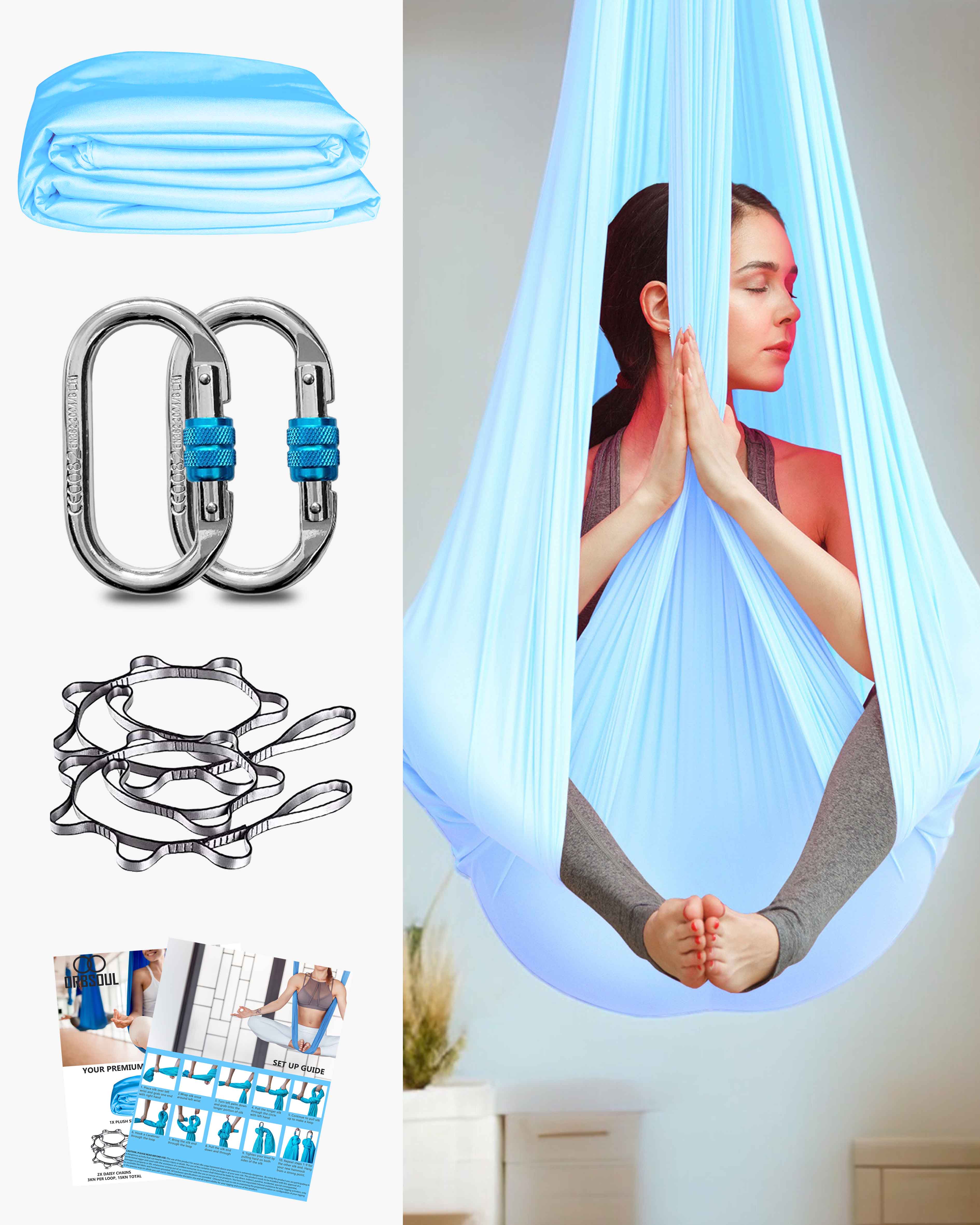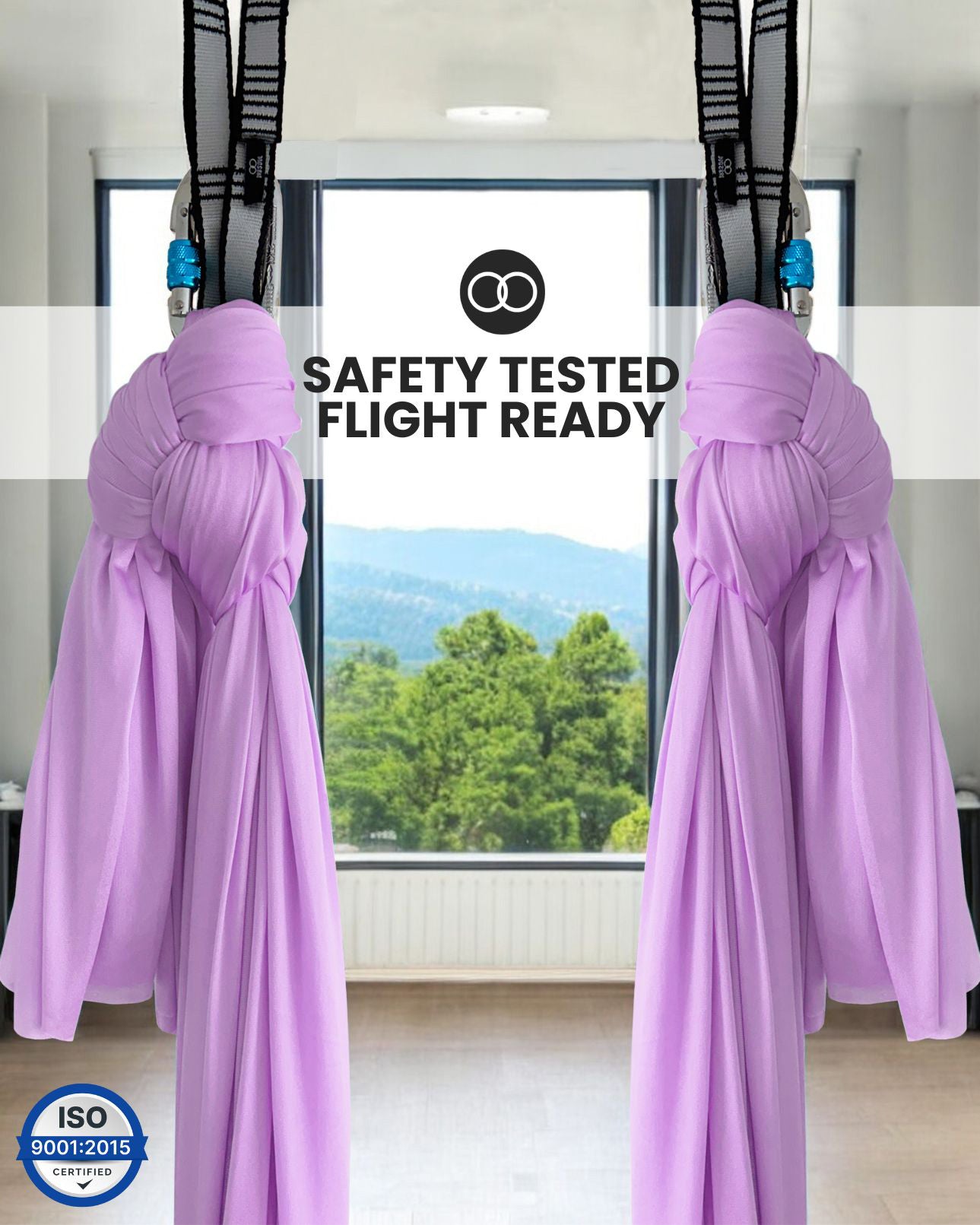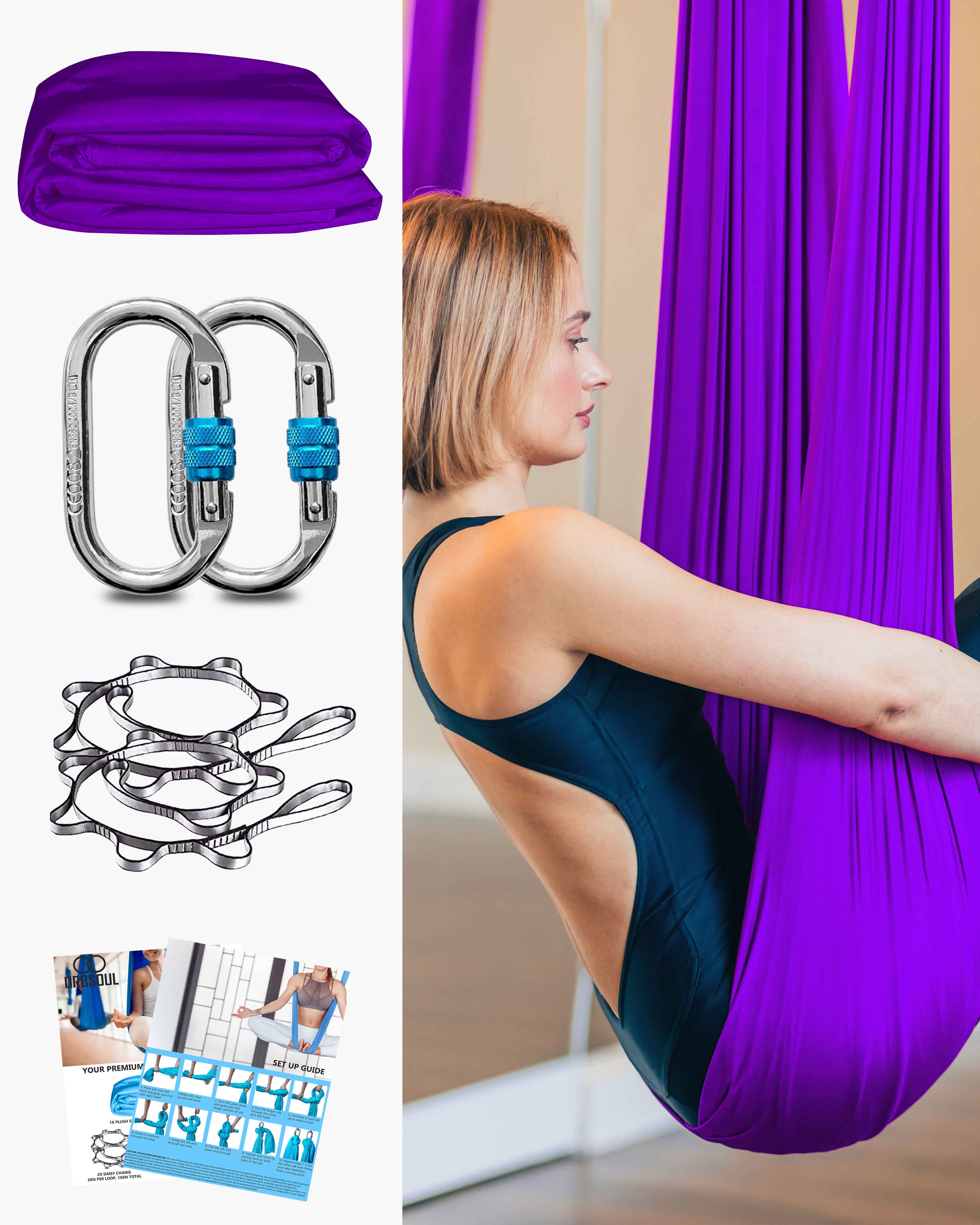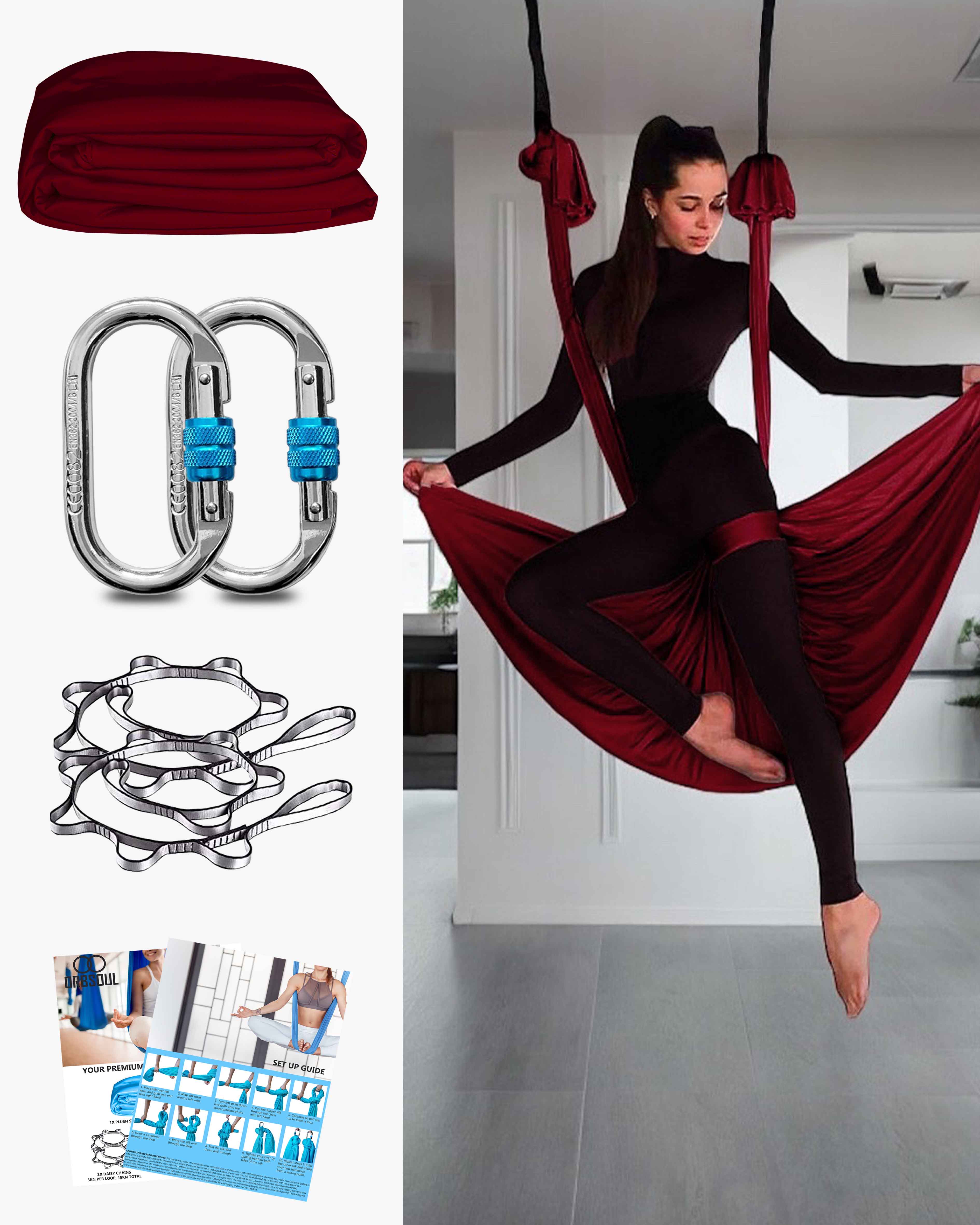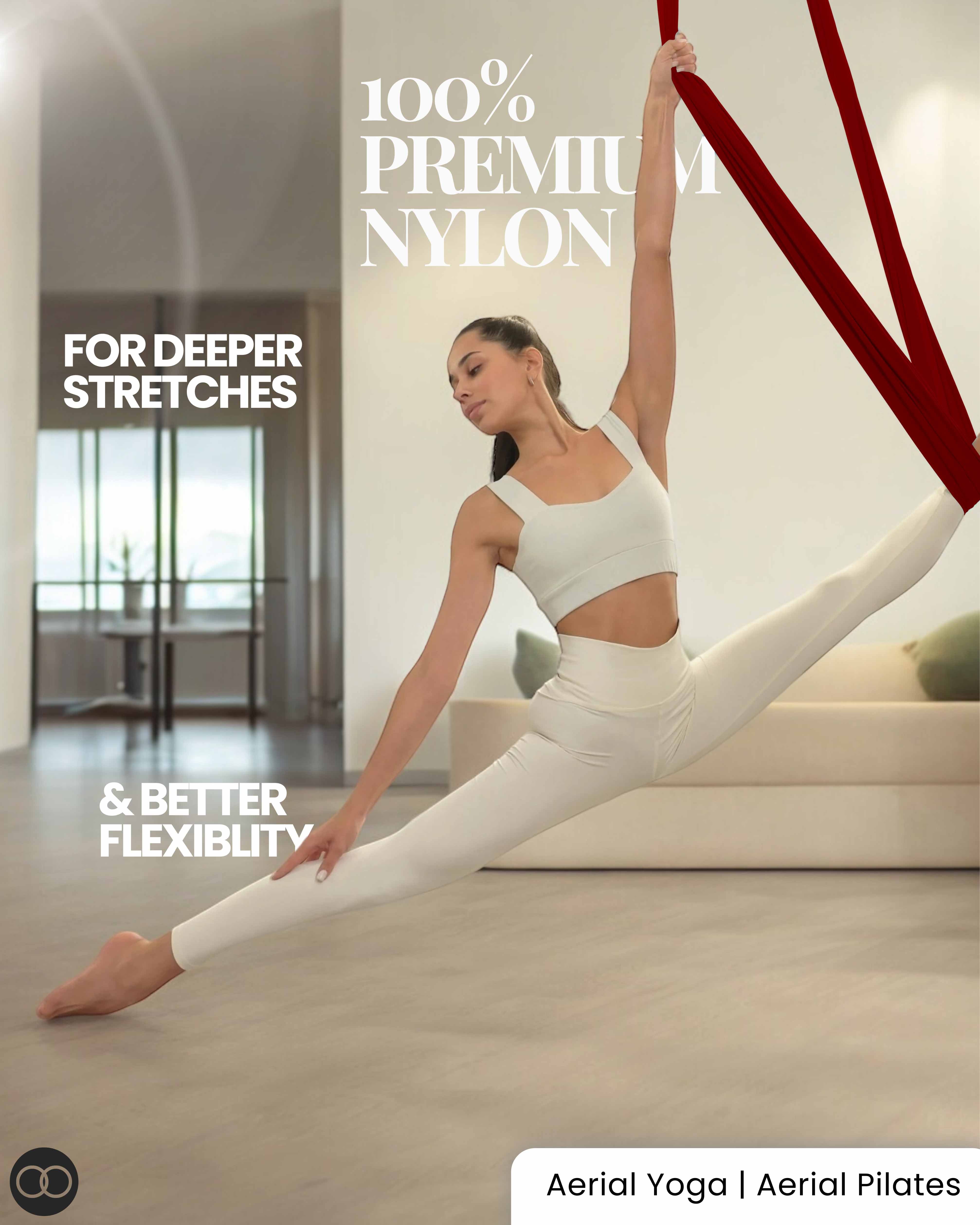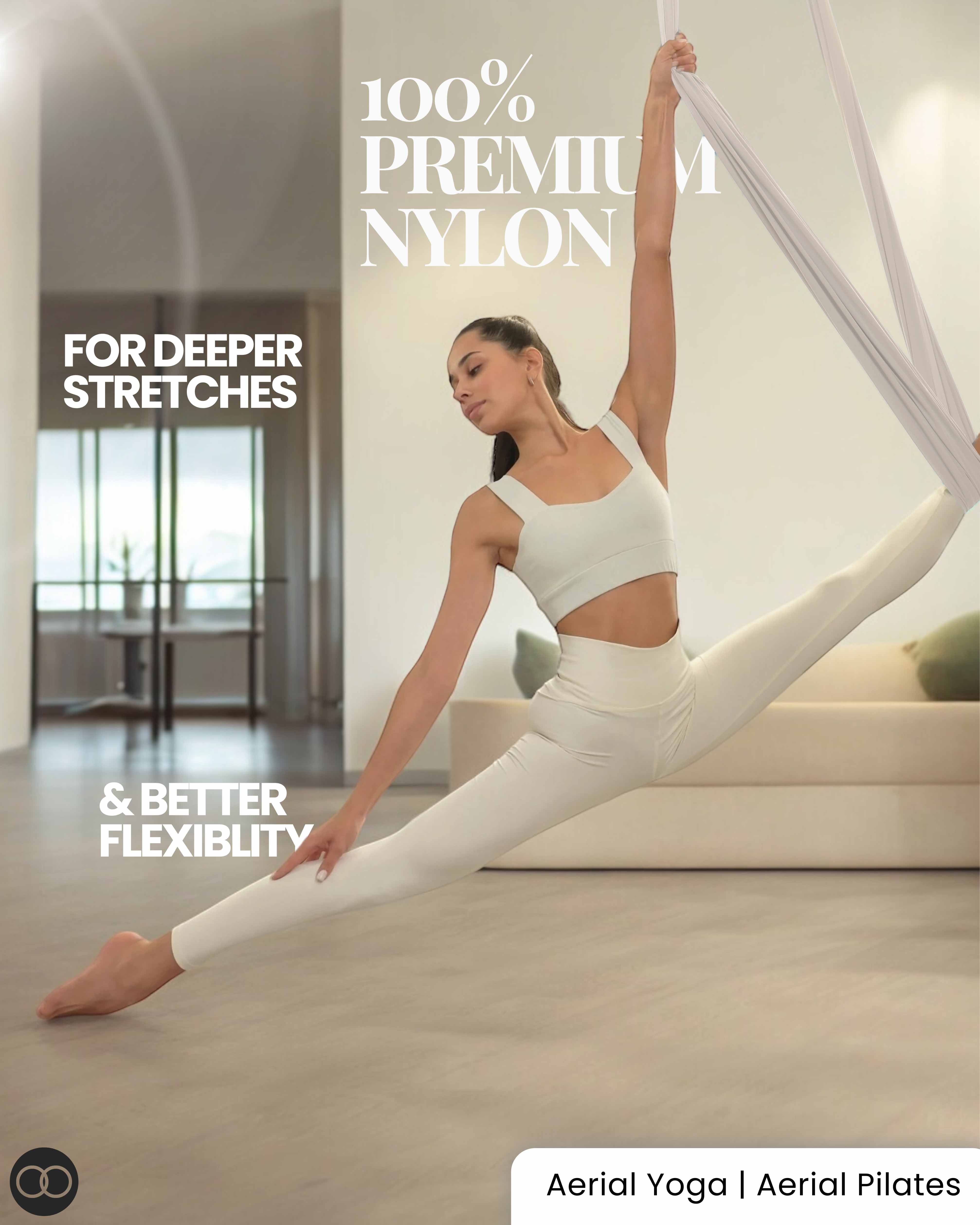Aerial Rigging at Home and Beyond: The Ultimate Rigging Guide for Aerialists
Learn the fundamentals of aerial rigging and find the right rigging solution for your new aerial oasis.
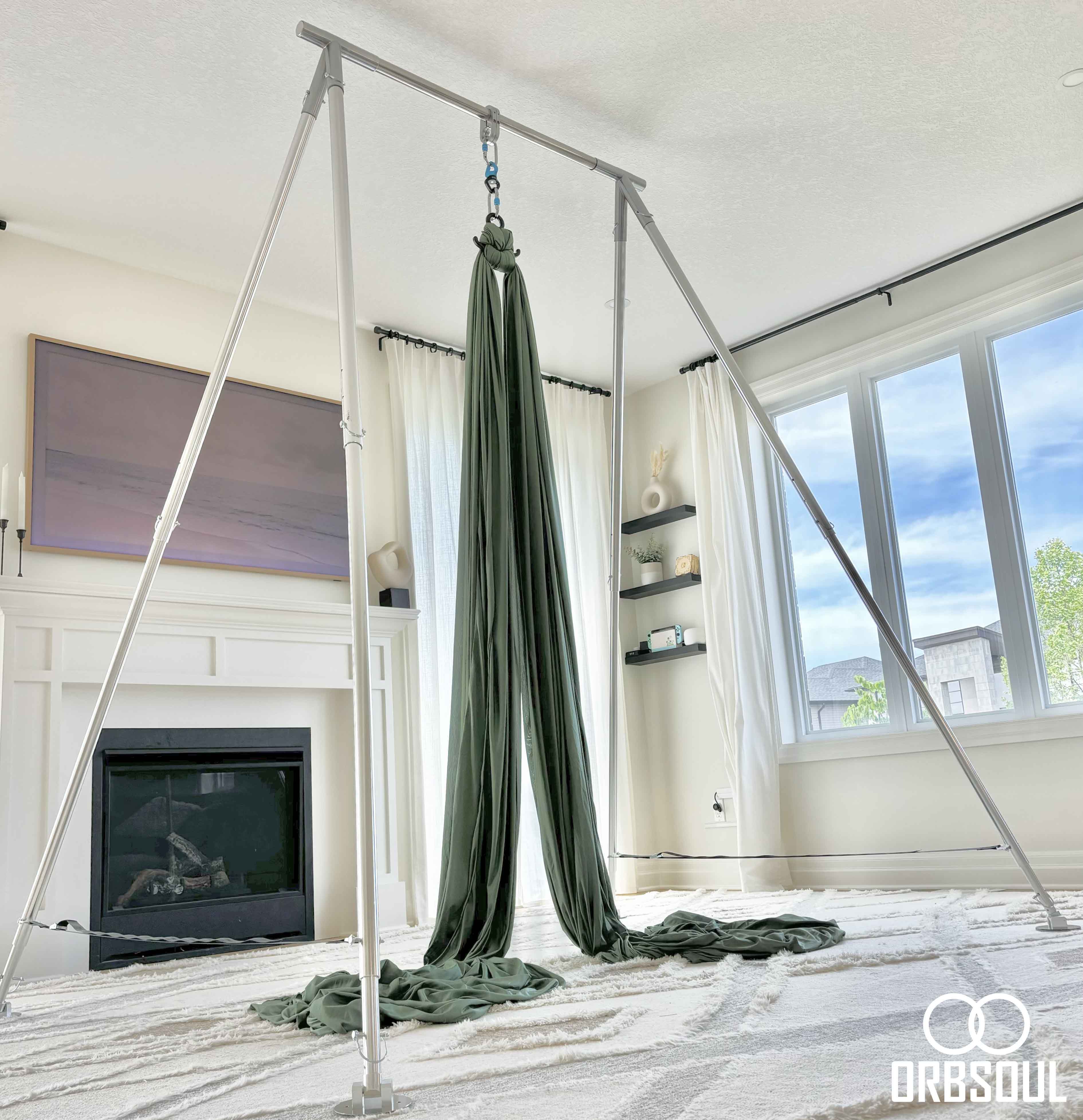
In this guide, we will explore your aerial rigging components as well as rigging points for safe aerial practice. From aerial round slings to free standing rigs, every rigging point has it's advantages and limitations. Aerial arts is an incredibly empowering art that you should be proud to be apart of. However, there are dangers and challenges associated and the use or mis-use of aerial apparatuses is inherently dangerous. Consult a professional rigger, licensed contractor, or engineer to help you with aerial installations and only use safety tested gear within your aerial set-up.
Before we dive in, let's learn about the physics of aerial movements and forces.
Aerial physics and forces - Explained
In aerial arts, the force on your body and rigging equipment increase significantly the higher up you are, due to gravity. As you descend, potential energy converts to kinetic energy, raising your velocity. When your aerial apparatus such as aerial silks stops your fall, the rapid deceleration generates an impulse force on your body and the rigging equipment.
This is why high-dynamic movements such as drops generate much more force compared to low-dynamic aerial movements. At maximum, some high level drops can generate forces of up to 10 times your body weight.

Now that we've established the relationship between training height and the forces generated, you can better determine which rigging solution you need to safely handle the height and type of aerial movements you want to do.
To help you, we will be breaking down aerial movements into spice levels based on how much force is generated🌶️
Level 1 🌶️ - Aerial strength and conditioning, Aerial yoga, Pilates, posing, and stretching.
Level 2🌶️🌶️- Spins, wraps, and straddles.
Level 3 🌶️🌶️🌶️ - Drops
Did you know? A slower stopping time also means lower impact force. This is how safety crash mats reduce injury, by cushioning falls through extending the time over which the force is dissipated. Check out our 8 key tips for safe training to learn more about training safely.
Now let's move on to rigging hardware and different rigging points to find what's right for you.
Carabiners, Swivels, & Figure eights
The heart of every aerialists kit

Carabiners are the heart of every aerialists rigging kit. They allow you to clip into your rigging point as well as connect additional components.
Swivels allow for safe and rotation to your aerial apparatus so you can spin freely without twisting or knotting straps and fabric. Warning: Do not use fabric O-slings for rotation. Fabric breaks down quickly from rotational friction as they do not have the proper components to handle friction. Using O-slings as a rotational point will lead to significant equipment failure and injury.
Figure eights come in various shapes and sizes and acts as your secure anchor point to wrap your aerial fabric around.
The components of our aerial rigging kits are repeatedly tested and rated to a minimum of 25kn (5600 lbs) meaning they are able to handle high dynamic moves (🌶️🌶️🌶️).
Ensure that all components of your kit are not just tested once, but have repeated batch testing. Consistent and up-to-date testing is the only way to ensure safety for aerial gear on the market.

Only use aerial hardware that is designed for aerial use and safety tested to the appropriate governing standards.
Each component should have a load rating in kilonewtons (kN). This value is known as the minimum breaking strength (MBS) which is determined through industry standard safety testing. Kilonewtons are the standard unit of measure for aerial gear with 1 kN = 225lbs. Check out our guide for a full breakdown of safety testing and certification in aerial arts for more info.
Safe rigging rule - Always load your carabiner correctly

Ensure your carabiner is tensioned on the major axis. Never tri-load or quad-load a carabiner as it greatly reduces the strength and can lead to failure before the tested kN. Always read and understand the instructions for use of your gear.
Find the latest technical notices for your Orbsoul gear here.
Safety Documentation and Specifications
Aerial Rigging Hardware Technical Notice (PDF)
Infinity Swivel™
- Tested Breaking Strength (MBS): 30kN
Balance 8 Descender
- Tested Breaking Strength (MBS): 50kN
Fire-Red Carabiners
- Tested Breaking Strength (MBS): 25kN
Aerial rigging straps, strops and round slings
Tame beams, extend your aerial apparatus, or anchor your hoop with the right rigging strap.

Aerial rigging straps come in various shapes, sizes, and load ratings, making them one of the most versatile additions to your setup. They can act as the main hanging point for your silk from a structure or be used to extend the length of your setup. Round slings can be used as rigging points by wrapping around beams or structures. Understanding weight limitations is crucial as different straps are designed for specific purposes. Harmony yoga straps and daisy chains are intended for light aerial yoga (🌶️), while thicker round slings like the Airloop are suitable for more demanding aerial arts (🌶️🌶️🌶️). Always inspect your straps for wear before each use and stop using them immediately if worn.
Advantages:
- No installation or drilling required
- Quick set-up to wrap around a structural beam
- Can extend the length of your aerial set-up
- Versatile and portable
Disadvantages:
- To act as a rigging point, you must have a suitable beam or structure for the level of training you want
- Requires evaluation of the beam by a professional to determine if it's suitable for aerial arts
- Some straps, such as harmony yoga straps, are not for aerial dynamics, and can only be used to aerial yoga, Pilates, and stretching.
The do's and don'ts of aerial straps


You can also use a round-sling to extend the length of your set-up or use the chocker hitch directly around your hoop. A choker hitch is tied by creating a loop around, wrapping the working end of the sling around the standing part, and pulling it tight to secure the knot. Note: Choker hitches reduces the strength of the sling by 75% or more.
Functional Length: 1m (3.3 ft)
Width: 5cm (2 in)
Working Load Limit: 2000 kg
Factor of Safety: 7:1
Ceiling Mounts
Ceiling mounts are rigging points designed to attach aerial equipment to suitable ceilings.
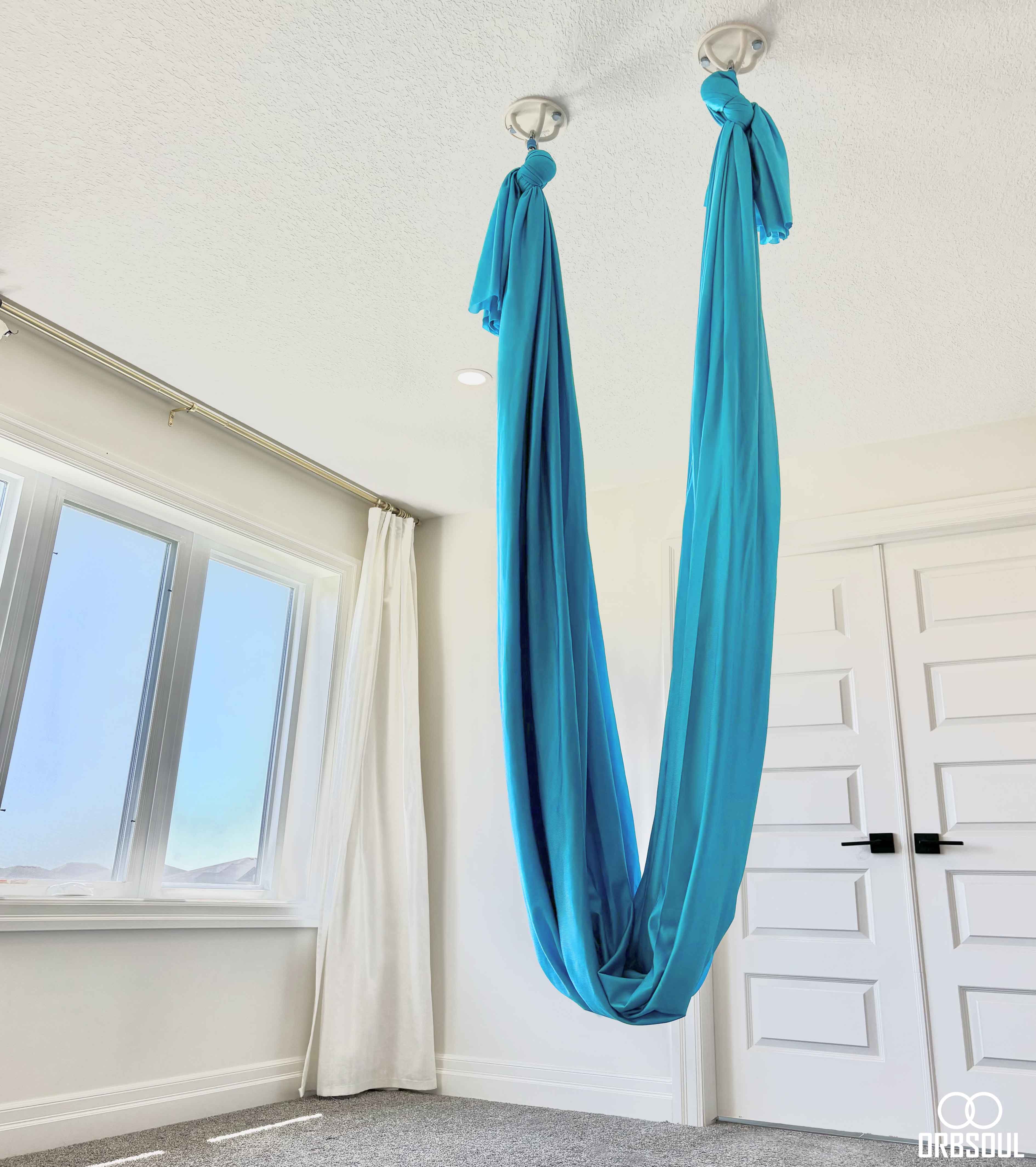
Ceiling mounts can be great if you have a suitable ceiling for aerial arts. They are perfect for aerial yoga and light aerial strength and conditioning training so you are strong and ready for more advanced moves during your next aerial class. While mounts are engineered and tested to be strong, the safe weight limit is ultimately constrained by strength of the structure and the method of installation. Before installation, have a professional assess your ceiling structure to ensure it can support the loads required for aerials. Install the mount(s) in a location that provides enough clearance for safe aerial practice. Professional riggers can also provide installation techniques and specialized hardware that are rated for higher loads than the included hardware. Regularly check and maintain your mounts and attached equipment to ensure continued safety.
Please note: Only a professional can determine if your ceiling and their installation techniques will allow you to train at your desired spicy level.
Advantages:
- Made for aerial yoga and light aerial strength and conditioning
- Designed to be a sleek low profile addition to your ceiling which equipment can be attached or detached quickly
Limitations:
- Not suitable for dynamic movements such as aerial silks drops
- Requires a professional to determine if your ceiling is able to handle the loads associated with aerial arts
- Requires professional installation
Use cross welded ceiling anchors for extra enforcement.
Pull Test Results:
Breaking strength (MBS) - 19kN (1900kg)
Manufacturer Safe Working Load Limit (WLL):
135kg (300 lbs) per anchor
Free Standing Rigs
Free standing rigs are the perfect no drill solution engineered for aerial arts.

An aerial rig is a sturdy structure designed to support aerial arts equipment. Made from high-strength materials such as steel, aerial rigs can handle designed to handle the weight and dynamic movements of aerials. Portable freestanding models like the Orbsoul Pegasus feature adjustable height settings, multiple anchor points and ground stakes to prevent tipping. Ideal for both studios and home use, a well-designed aerial rig ensures stability and safety, allowing performers to practice and perform confidently. Regular inspection and maintenance are essential for ongoing safety and performance.
Advantages:
- No installation or drilling required
- Portable and height adjustable
- Can be set-up outside
- Safety tested by the manufacturer
Limitations:
- Large footprint and heavy
- Assembly required as well as disassembly when not in use
- Regular inspection and maintenance required
Rigging Tip - Everything wears eventually
All rigging hardware, like everything in life, will wear to the point in which it needs to be retired. Frictional wear due to rubbing under load will cause material loss.

Aerial Rigging FAQ
Learn more about safe rigging
Is it safe to rig from trees?
We do not recommend or condone rigging from trees. If you are considering rigging from a tree follow the below guidelines:
Arborist Consultation: Consult with a professional arborist to assess the tree before rigging.
Rigging Expert: Consult with or hiring a professional rigger who has experience with tree rigging.
What is Tri-loading?
Triloading a carabiner refers to the condition where a carabiner is subjected to loads along three different axes simultaneously. The combination of loads can lead to overstressing the carabiner’s material and design, increasing the risk of breaking or deforming, which can be catastrophic in rigging scenarios.
What about steel chains?
It is not recommended to use chains within your aerial rigging systen. Here's a few reasons why:
Inconsistent Load Distribution: Chains can create uneven load distribution due to their flexible, segmented nature. This can lead to unpredictable forces on the rigging points and equipment, increasing the risk of failure.
Lack of Flexibility: Chains lack the flexibility needed for aerial arts, making them difficult to position and adjust properly. This rigidity can cause dangerous side-loading or triloading on carabiners and other rigging equipment.
Increased Risk of Injury: Chains can pinch or catch on fingers, clothing, or gear, increasing the risk of injury during setup or performance.
Weight and Bulk: Steel chains are heavy and cumbersome, making them difficult to handle and transport. This added weight also places more stress on the rigging points and the structure, which could exceed load limits.
What if my equipment does not have load ratings?
Never use any equipment that is not properly labelled with load ratings as it's a clear indication is not safety tested or appropriate for use with aerial arts.


